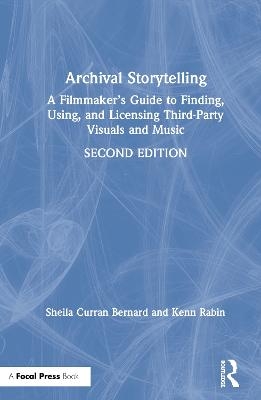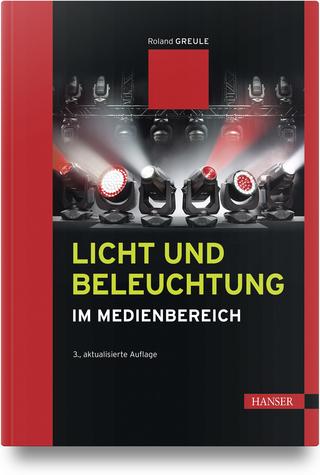
Archival Storytelling
Routledge (Verlag)
978-1-138-91504-6 (ISBN)
Fully revised and updated, Archival Storytelling second edition is a timely, pragmatic look at the use of audiovisual materials available to filmmakers and scholars, from the earliest photographs of the 19th century to the work of media makers today.
Whether you’re a top Hollywood filmmaker or a first-time documentarian, at some point you are going to want to find, use, and license third-party materials—images, audio, or music that you yourself did not create—to use them in your work. This book explains what’s involved in researching and licensing visuals and music, and exactly what media makers need to know when filming in a world crowded with rights-protected images and sounds. Filled with insights from filmmakers, archivists, and intellectual property experts, this second edition defines key terms such as copyright, fair use, public domain, and orphan works. It guides readers through the complex archival process and challenges them to become not only archival users but also archival and copyright activists.
This book is an essential resource for both students and professionals, from seasoned filmmakers to those creating their first projects, offering practical advice for how to effectively and ethically draw on the wealth of cultural materials that surround us.
Sheila Curran Bernard is an Emmy and Peabody Award-winning filmmaker and writer with credits on nearly fifty hours of theatrical and television programming, and the author of Documentary Storytelling, now going into its fifth edition. She is an associate professor in the Department of History at the University at Albany, State University of New York. Kenn Rabin is a consulting producer for narrative features and documentaries and an internationally-recognized expert on the use of archival materials in film storytelling, with over one hundred credits on projects including Troop Zero (Bert & Bertie), Selma (Ava DuVernay), Milk (Gus Van Sant), and the acclaimed PBS series Eyes on the Prize and Vietnam: A Television History.
Acknowledgments
CHAPTER 1 Introduction
PART 1 • ABOUT ARCHIVAL MATERIALS
CHAPTER 2 Still and motion picture photography: a brief history
CHAPTER 3 Recorded sound: a brief history
CHAPTER 4 User beware: evaluating the archival record
CHAPTER 5 Evidence on film: A conversation with Rick Prelinger
PART 2 • working with ARCHIVAL MATERIALS
CHAPTER 6 Finding what you need
CHAPTER 7 Should you hire a professional?
CHAPTER 8 Organizing and ordering third-party materials
CHAPTER 9 Creative and ethical considerations
CHAPTER 10 The power of eyewitness accounts: A conversation with Roberta Grossman
PART 3 • RIGHTS AND LICENSES
CHAPTER 11 Introduction to rights and licenses
CHAPTER 12 Public domain
CHAPTER 13 Fair use
CHAPTER 14 Fair dealing, moral rights, and more: A conversation with Hubert Best
CHAPTER 15 Licensing visuals
CHAPTER 16 Licensing music
PART 4 • Additional Material
CHAPTER 17 Afterword
About the authors
Index
| Erscheinungsdatum | 15.05.2020 |
|---|---|
| Zusatzinfo | 1 Line drawings, black and white; 39 Halftones, black and white |
| Verlagsort | London |
| Sprache | englisch |
| Maße | 152 x 229 mm |
| Gewicht | 612 g |
| Themenwelt | Kunst / Musik / Theater ► Film / TV |
| ISBN-10 | 1-138-91504-1 / 1138915041 |
| ISBN-13 | 978-1-138-91504-6 / 9781138915046 |
| Zustand | Neuware |
| Informationen gemäß Produktsicherheitsverordnung (GPSR) | |
| Haben Sie eine Frage zum Produkt? |
aus dem Bereich


